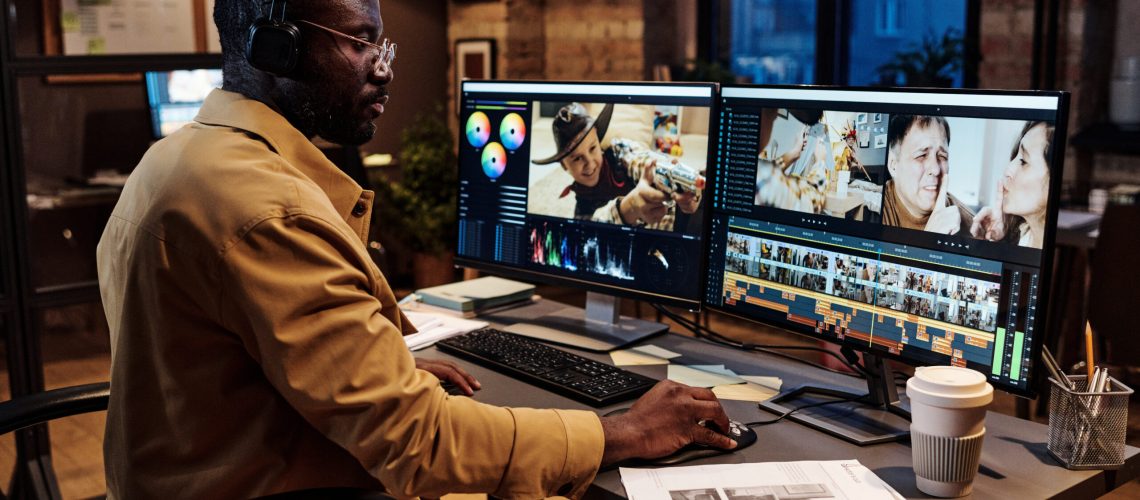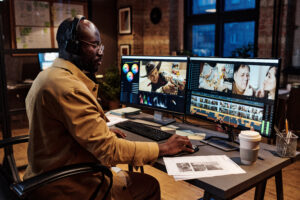When you edit a written document, you can seamlessly remove unnecessary words, tighten sentences, and rearrange paragraphs without leaving a trace. A paragraph that once took up half a page can be condensed to a few powerful lines. The flow remains consistent, and the reader is none the wiser.
Video, especially one featuring an interview, operates on a completely different set of rules. The human brain is incredibly adept at recognizing visual and auditory inconsistencies. When you cut a video mid-sentence, the result is jarring. The speaker’s face may suddenly jump, their tone of voice might shift abruptly, or a word may be left hanging in the air. This isn’t just a minor visual glitch—it breaks the trust with the viewer. The edit becomes glaringly obvious, making the content feel disjointed, unnatural, and, worst of all, inauthentic. Your audience knows something has been “cut,” which can detract from the credibility of the speaker and the message they are trying to convey.
A successful corporate video is built on the foundation of trust. An executive interview or a client testimonial is designed to foster a connection with the viewer, and awkward jump-cuts undermine that effort. This is why a strategic Washington DC corporate video production partner focuses on a flawless, end-to-end process, not just the technical wizardry in post-production.
The Solution: A Proactive Approach to Filming Interviews
So, if editing is not a magic fix for rambling dialogue, what’s the secret to getting a concise, impactful interview? The answer lies in the pre-production and during-production phases. A professional video production crew, like the team at 8 Media Group, knows that the key to great editing is great raw footage.
Ask Strategic Questions that Prompt Concise Answers
The most effective way to avoid rambling interviews is to ask questions that naturally elicit brief, direct answers. Instead of open-ended questions like, “Tell us about your company culture,” a skilled interviewer will ask, “What is the one core value that defines your company culture?” This forces the interviewee to distill their thoughts into a single, focused statement.
Another powerful technique is to frame questions that can be answered with a clear thesis statement. For example, instead of asking “What are the benefits of your new product?” you could ask, “In a single sentence, what is the single biggest benefit your new product offers to a customer?” This type of focused questioning helps the interviewee stay on track and provides the editor with a clean, useable soundbite. This is a critical skill that sets a professional B2B video production Washington DC team apart from a novice.
Guide the Interviewee to Be Succinct
Even with the best questions, a passionate or nervous interviewee may still ramble. This is where the interviewer’s expertise is paramount. Instead of letting a person continue their thought process for five minutes, a professional interviewer will gently but confidently guide the conversation.
Here are two effective strategies our team uses on-set:
- Rephrase the Question: If a speaker is going off on a tangent, the interviewer can politely interject by saying, “That’s a great point. To bring it back to our original question, could you sum up what you just said in 1-2 sentences?” This redirects the speaker while still valuing their contribution.
- Prompt for a Summary: An alternative is to ask the interviewee directly to “rephrase that for the camera” or “give us the headline version of what you just said.” This works because it puts the onus on the speaker to create the concise statement, which they can often do with a bit of encouragement.
These techniques don’t just lead to better videos—they create a more comfortable and efficient experience for the corporate executive or spokesperson being filmed. They appreciate the guidance and the respect for their time.
Beyond the Cut: The True Value of Strategic Editing
While the pre-production strategies we’ve discussed are vital, a professional editor’s job is about more than just finding the perfect soundbites. It’s about weaving together a compelling narrative. It’s about using B-roll footage, graphics, and music to bridge gaps, enhance the story, and create a seamless flow that captivates the audience.
An expert editor can take a strong answer and make it even better by:
- Using B-roll: Covering up a natural pause or a quick breath with relevant B-roll (supplementary footage) of the company’s offices, products, or employees. This technique, called a J-cut or L-cut, allows the editor to smooth over minor imperfections and keep the story moving forward.
- Pacing the Narrative: A great editor understands the rhythm of a story. They know when to hold on a shot for emotional impact and when to use quick cuts to build energy.
- Enhancing the Message: Adding text on screen to highlight key statistics or using graphics to illustrate a complex concept can elevate a simple interview into a powerful communication tool.
For a corporate executive or event planner in the D.C. area, this is the difference between an amateur recording and a professional, results-driven video. When you partner with a full-service production company, you’re not just hiring someone to press “record.” You’re investing in a team that understands the art of storytelling and the science of audience engagement.
Ready to Elevate Your Brand’s Story?
Video is an essential component of modern business communication, but its power is only unlocked when handled by professionals who understand its unique demands. At 8 Media Group, we specialize in creating strategic, story-driven content that builds trust and drives results for organizations across the DMV. From DC event videography to corporate brand films, our team is adept at guiding the entire production process to ensure your final video is polished, authentic, and impactful.
Don’t settle for a video that feels cobbled together. Contact us today to schedule a consultation and see how our expertise can make your next video project a resounding success.



